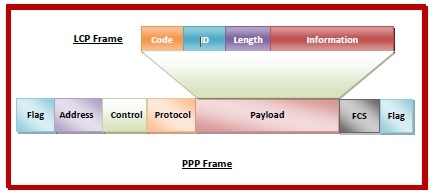
 Data Structure
Data Structure Networking
Networking RDBMS
RDBMS Operating System
Operating System Java
Java MS Excel
MS Excel iOS
iOS HTML
HTML CSS
CSS Android
Android Python
Python C Programming
C Programming C++
C++ C#
C# MongoDB
MongoDB MySQL
MySQL Javascript
Javascript PHP
PHP
- Selected Reading
- UPSC IAS Exams Notes
- Developer's Best Practices
- Questions and Answers
- Effective Resume Writing
- HR Interview Questions
- Computer Glossary
- Who is Who
Link Control Protocol (LCP)
Link Control Protocol (LCP) is a part of Point – to – Point Protocol (PPP) that operates in the data link layer. It is responsible for establishing, configuring, testing, maintaining and terminating links for transmission. It also imparts negotiation for set up of options and use of features by the two endpoints of the links.
Working Principle
When PPP tries to communicate, it sends out LCP packets prior to the establishment of connections over the point – to – point link. The LCP packets check the communication line to ascertain whether it can sustain the data volume at the required speed. Accordingly, it agrees upon the size of the data frame. It also identifies the linked peer and detects configuration errors. If the LCP accepts the link, it establishes and configures the link so that communication can proceed. If the LCP concludes that the link is not working properly, it terminates the link.
Thus, the functions performed by LCP can be summarised as −
It checks the identity of the linked peer. It then either accepts or rejects the connection with the peer.
It determines the size of the data frame for transmission.
It identifies configuration errors.
It tests and maintains the link.
It terminates the link if it identifies that the link is not working properly.
Types of LCP Frames
There are three types of LCP frames depending upon their purpose −
LCP configuration frames
LCP termination frames
LCP maintenance frames
LCP Frame
The LCP frame is encapsulated in the Payload field of the PPP frame.
The fields of the PPP frames are −
Flag: 1 byte that marks the beginning and the end of the frame. The bit pattern of the flag is 01111110.
Address: 1 byte which is set to 11111111 in case of the broadcast.
Control: 1 byte set to a constant value of 11000000.
Protocol: 1 or 2 bytes that define the type of data contained in the payload field.
Payload: This encapsulated the LCP frame which carries the data from the network layer.
FCS: It is a 2 byte or 4 bytes frame check sequence for error detection. The standard code used is CRC (cyclic redundancy code)
The fields of the encapsulated LCP frame are −
Code: 1 byte that identifies the type of LCP frame.
ID: 1 byte which is an identifier used to match requests and replies.
Length: 2 bytes that hold the total length of the LCP frame.
Information: It carries the data from the network layer.


